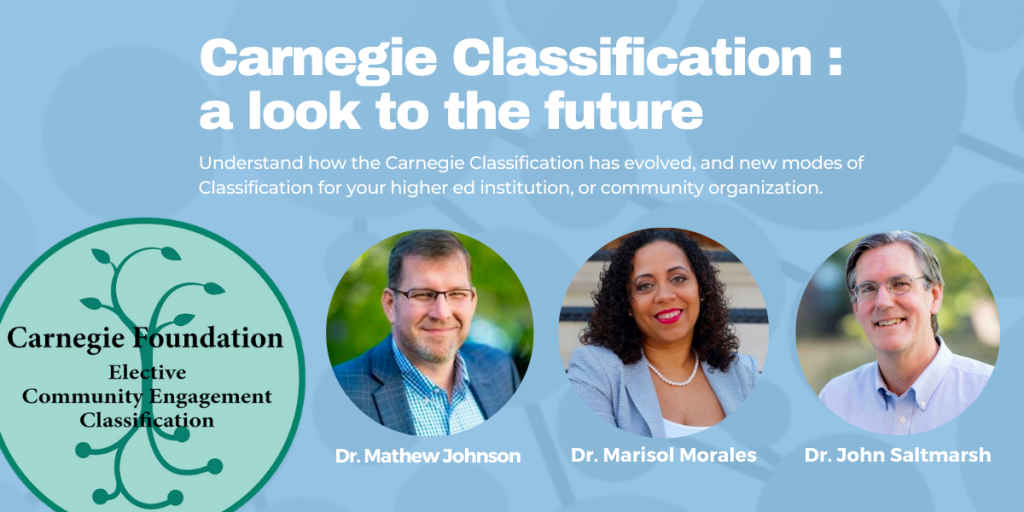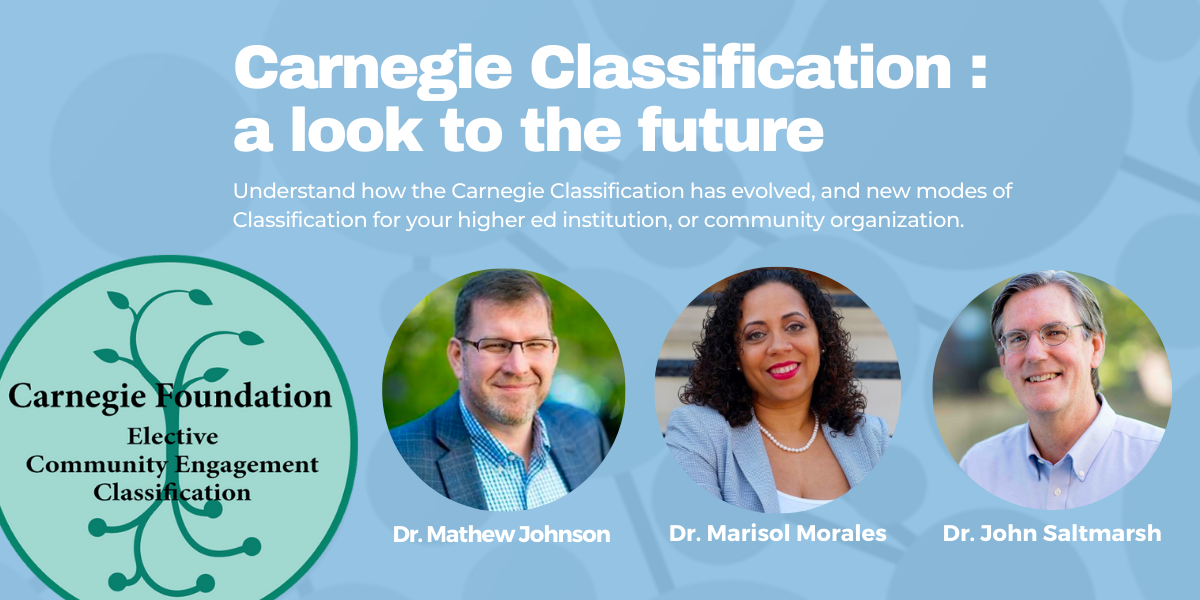In January of 2020, we shared our deep dive into the Carnegie Elective Community Engagement Classification. Since then, the administration of the classification has moved with Dr. Mathew Johnson to Albion College. Our team chatted with Johnson at a tumultuous time, as community engagement and service-learning shifted to meet the newfound needs and challenges of COVID-19. We reflected together on how the Carnegie Elective Classifications, GivePulse, and the higher education community will work together in the future.
In this post, we will provide an overview of the Elective Carnegie Community Engagement Classification and offer our shared hopes for the future of community engagement.
In addition, on Thursday, December 9th, 11am CT (12pm ET), we will be hosting a webinar with the Carnegie Elective Classification team about what to anticipate for the Carnegie Classifications. To register, go here.
***Updated: there is an additional webinar on Thursday, February 24th, 2pm CT (3pm ET): register here

The Carnegie Classification: Parameters for Innovation
The Carnegie Foundation has been classifying higher education institutions since the 1970s when they organized institutions according to degree level, specialization, and more. The Elective Carnegie Community Engagement Classification was introduced in the early 2000s, with the first classification cycle occurring in 2006. This classification is a process through which campuses can do a self-study of the degree to which they are employing the best practices of community engagement and a chance to be recognized for their engagement through the Carnegie Elective Classification endorsement.
The next application cycle plans to innovate and expand upon the processes already in place. These innovations will have three specific parameters. The first will be expanding to international partnerships. Partners in Canada and Australia are already in the process of going through the existing framework, while partners in Vietnam, Pakistan, South Africa, Kenya, and Zimbabwe are in the process of determining how to reinitiate conversations started before COVID-19 in a remote manner.
The second will be thinking about the classification as, in Johnson’s words, “a process and a technology of organizational change.” This process can apply in other areas of public purpose, which leads to the development of several other frameworks, including Leadership through a partnership with Rice University.
The third will be to revise the existing community engagement classification, as happens between every cycle. This includes surveying the research and analyzing the data from the previous cycle to track changes across campuses. In the wake of the pandemic and the subsequent shifts in community engagement, the concept of tracking and analyzing change feels particularly critical.
Whether you are a new or returning Elective Classification for Community Engagement Carnegie applicant, a higher education institution looking for more information, or another community organization interested in how the principles of Elective Classification for Community Engagement Carnegie can alter your own work, contact our team here.
*** Updated: The launch of the Carnegie Elective Classifications application will be available on GivePulse on March 1st, 2022. Check back with us if you have any questions or if you would like to connect with our team to learn more about the classifications this year.

